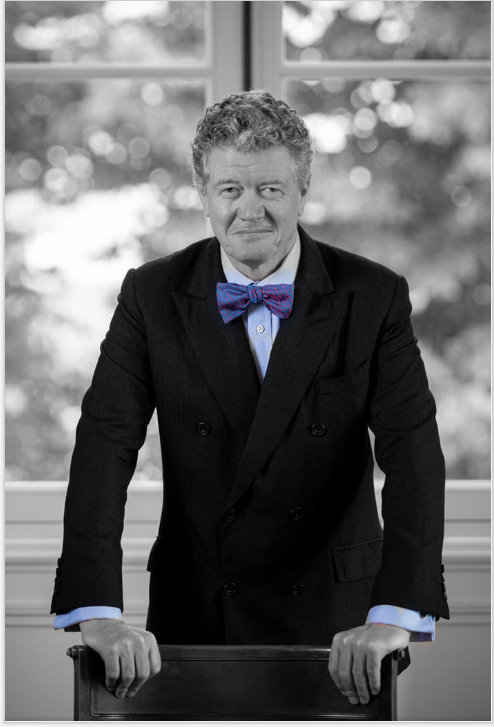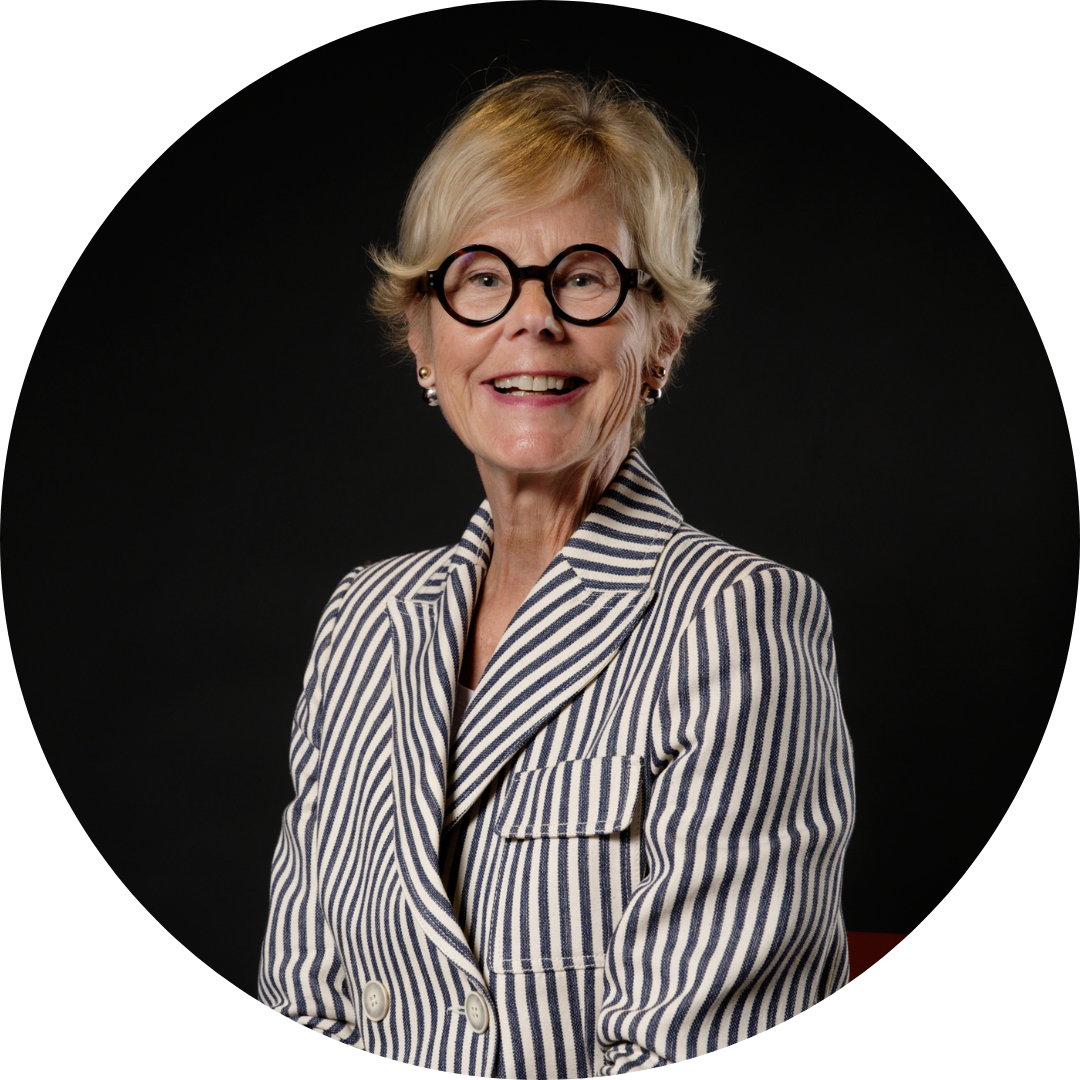Managing Director AXA Millésimes
Met by Gerda at Château Pichon Longueville Baron
In 1993, Christian Seely became Managing Director of Quinta Do Noval in Portugal. In 2000, the AXA Group appointed him Managing Director of Axa Millésimes, a subsidiary of Axa, an international insurance group. Since then, he has managed the entire portfolio of Axa Millésimes, which is based at Château Pichon Baron in Pauillac. In addition to this grand cru classé in Pauillac, Christian Seely is responsible for Châteaux Pibran in Pauillac and Suduiraut in Sauternes, as well as Domaine de l’Arlot in Burgundy, Diznoko in Hungary, Quinta do Noval in Portugal, and two vineyards in California, including Outpost (Nappa) and Platt Vineyard (Sonoma).
Terroirs, Vines & Wine Cellars
Gerda: What are the main technical challenges facing Bordeaux over the next few years?
Christian Seely: Every year, we’re faced with the challenge of producing the best wines, depending on the weather conditions that nature provides. It’s an occupation that, by its very nature, represents a daily challenge and is the very essence of this profession. Every year, there’s work to be done and it’s essential to be extremely attentive to all the dangers, risks and opportunities that present themselves. I’m not saying this to emphasize that the job is difficult and unpleasant. On the contrary, that’s what makes it so interesting and exciting.
To give you another answer, we are indeed facing climate change challenges. It’s a worrying development, and so we need to adapt our practices so that we can continue to produce the wines for which Bordeaux is renowned.
A Grand Cru Bordeaux is a wine that historically has a certain freshness, that is complex and that remains drinkable. We mustn’t lose this idea of freshness in our wines because of climate change. It’s vital to remain vigilant, because with higher temperatures, wines can have higher levels of alcohol. 30 years ago, when I started working with vineyards, our main objective was to ensure that the grapes were ripe. Today, ripeness is not difficult to achieve, but it is more complex to get that freshness. We have therefore taken several steps to meet this challenge, including the use of plant cover and changes to the blends. 30 years ago, Pichon was 60% Cabernet Sauvignon and 40% Merlot. In recent years, we’ve increased the proportion of Cabernet Sauvignon to 80% and even 87%, and this higher proportion of Cabernet allows us to preserve freshness better.
G:What are the personal challenges in your job?
CS: There are a lot of responsibilities that come with managing the AXA Millésimes wine group, which owns several vineyards around the world.
Personally, I’m deeply involved in managing the vineyards and making the wines. It’s crucial to have dedicated and passionate people at every location that we can rely on. And who can meet the challenges I mentioned earlier: producing the best possible wines in the given climatic conditions. My greatest personal challenge is also to find those remarkable individuals who have the passion and talent to dedicate themselves fully to the estate they manage. It’s essential to find the right people and give them the right working conditions to pursue the exciting task of making great wines. It’s a unique profession. It’s also crucial to retain them, ensure their development and create a favourable working environment by allowing them to work in a harmonious atmosphere, which will inevitably be reflected in the wine.
G:For a grand cru, is organic compulsory?
CS: I have a very open mind on this question, but organic is not compulsory for a Grand Cru. We work biodynamically on our estate in Burgundy, and it works well. Here at Pichon, we are HVE 3 certified and we abandoned the use of herbicides and pesticides a long time ago. We discuss this subject a lot with the team. So far, we are pursuing a policy that is the best for the environment in the conditions of our vineyard. There is above all the question of controlling downy mildew, which represents a very significant risk because of the humidity of our climate in the Médoc. We resist the idea of protecting ourselves against mildew with copper sulphur alone. Indeed, if we go organic, we’ll have to use a lot of these products, and that’s the main reason why we haven’t taken the step of going organic. We have put in place an extremely rigorous programme to protect the environment and promote biodiversity, and we believe that our approach is best suited to our vineyard in the long term.
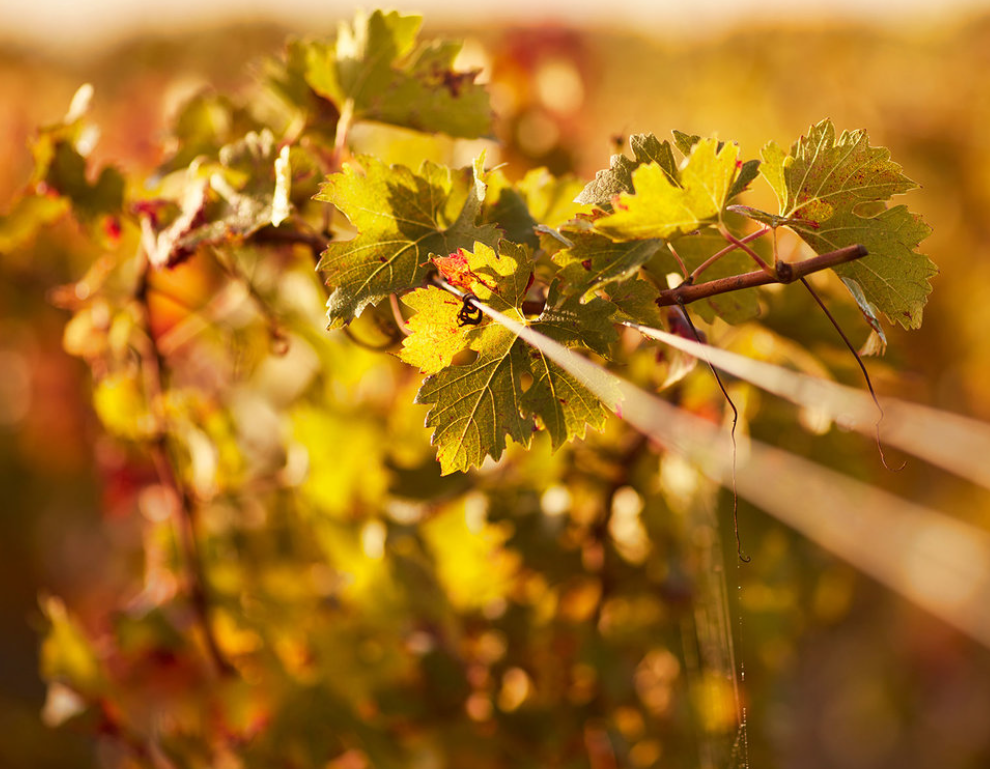
G: In 1982, 1990 and even more recently in 2009 and 2010, the châteaux were producing good yields and exceptional wines. Lately, the predominant feeling is that this is no longer possible. To produce exceptional wines, are estates doomed to produce small quantities?
CS : Yields are indeed very different over 40 years. I’ve been managing Pichon Baron since 2001 and we’ve accepted lower yields than before. In the 80s and 90s, yields easily exceeded 60 to 70 hl per hectare, whereas today here at Pichon, it depends of course on the vintage, but we are between 30 and 40 hl/ha. It’s a very important change, but we don’t want to continue with these low yields. It’s simply a question of accepting a certain balance while respecting the vines, and I believe that there is a relationship between the quantity demanded from the vines and the quality of the final product.
G: But the market sometimes feels frustrated. When you taste the delicious 1989 or 1990 vintages, which produced high yields, you wonder why this is no longer possible?
CS: The wines were delicious at the time, but what we’ll never know is what those same wines would have been like if the vines had produced 40 hl/ha instead of 60 to 70 hl/ha..
Properties and Brands
G: You and I tend to specialise in great wines, but is there still a future for small châteaux in Bordeaux?
CS: I’m aware that the situation is complicated for many producers, but I’m a believer. I believe that the Bordeaux wine trade has a crucial role to play. Bordeaux’s reputation is mainly driven by a small number of very large estates producing exceptional wines that sell at high prices. However, Bordeaux is also capable of producing excellent wines that offer excellent value for money. The main challenge for all these small producers is to market their wines.
I believe that the négociants who offer branded wines, by buying wines from various small quality estates at fair prices, play a very useful role for the region. They offer these estates, which have neither the size nor the will to travel the world to promote their wines, access to the market. For some winegrowers, it is very important to want to remain independent and to aim for quality, as well as work on marketing. This promotion and sales work is an essential part of a winegrower’s job, but it is costly and time-consuming. You have to find the right formula for each property.
G: You’ve travelled the world and its vineyards during your career, and AXA Millésimes has properties in the United States (2), Portugal and Hungary. But does Bordeaux still have a lot of assets?
CS: Yes, of course, we sometimes get questions from journalists or sommeliers who claim that Bordeaux is no longer as interesting as other regions. I don’t think that’s true at all.
I understand that Bordeaux has a great reputation in the world for producing great wines, and this reputation is justified. This encourages certain wine professionals to look elsewhere, simply to show that they are capable of finding something else. I understand that a sommelier may not only want to recommend an excellent Pichon Baron to his client, but also want to talk about a small producer to show that he has a broader knowledge. It’s an interesting thing to do, but it’s not necessary to denigrate Bordeaux at the same time.
Unfortunately, that happens from time to time. If you look at the reality of Bordeaux, you realise that it’s anything but boring. Bordeaux is a very dynamic region. When you take a technical look at the work done each year in our vineyards and how it has evolved over the last 25 years, it’s remarkable to see how we’ve transformed the profession of winemaker/producer over time. Bordeaux produces wines as great as they have ever been. The consistency of this quality today is the result of the passion of thousands of remarkable professionals. This makes the region one of the most dynamic in the world. Fortunately, consumers very often come back to Bordeaux and rediscover how wonderful our wines are.
G:Your father was a great English journalist, but what do you think of today’s wine rating systems?
CS: I think the situation is healthier than it used to be, particularly during the Parker era. He was a single journalist who dominated the market. The market waited for his notes, and these could make the reputation of a vintage and of the wine in that vintage. Everything focused on his notes. Making a wine is not just the effort of a team over a year, but often the effort of decades. It wasn’t very healthy for all that to be judged by one taster in five minutes, and deplored with one number.
Today, things are very different. There are many talented tasting professionals, listened to by the market, who don’t all taste in the same way. There’s more diversity of opinion, which is healthier in itself. It’s worth pointing out that the Parker era marked the beginning of the interest in wine on many markets. It is not insignificant that Parker began his period of influence in 1982, at a time when the United States was discovering the great wines of Bordeaux. Many consumers, lacking experience, were looking for the assurance provided by the illusion of certainty offered by a numerical rating. Having travelled extensively in the United States for a long time, I now hear consumers say: “I don’t consult critics’ scores, I know which wines I like, which properties I follow, and I buy based on my own knowledge”.
Thanks to the Internet, there is also much more exchange between consumers, which is fantastic. The opinions of the wine merchants who come to taste the wines also play a more important role. What’s more, a journalist can award 97 points to two wines, but it’s far more important to know what he has written about them. It’s this analysis that can really guide a choice and which is much more important than the score itself.
G: Do you think that the hierarchy of “quality, desirability and price” between Bordeaux grands crus is still open to change these days?
CS:All my work with the teams around me at the estates is based on the idea that it is always possible to go further in terms of quality. It’s thanks to this belief and the application of this principle in our daily work that Bordeaux has made great progress in quality over the last 25 years. It is undeniable that today we have wines with a level of precision and purity that exceeds the standards of the time. Progress is not standing still and will continue collectively in the right direction. It will be fascinating to see where we are in 10 years’ time. If we believe in this, and I do, it’s clear that there will be opportunities for certain properties to go even further. The relationship within the hierarchy will also change. It’s also the nature of things: if someone progresses faster than their neighbour, they will do the same. This competition between properties is extremely healthy and positive.
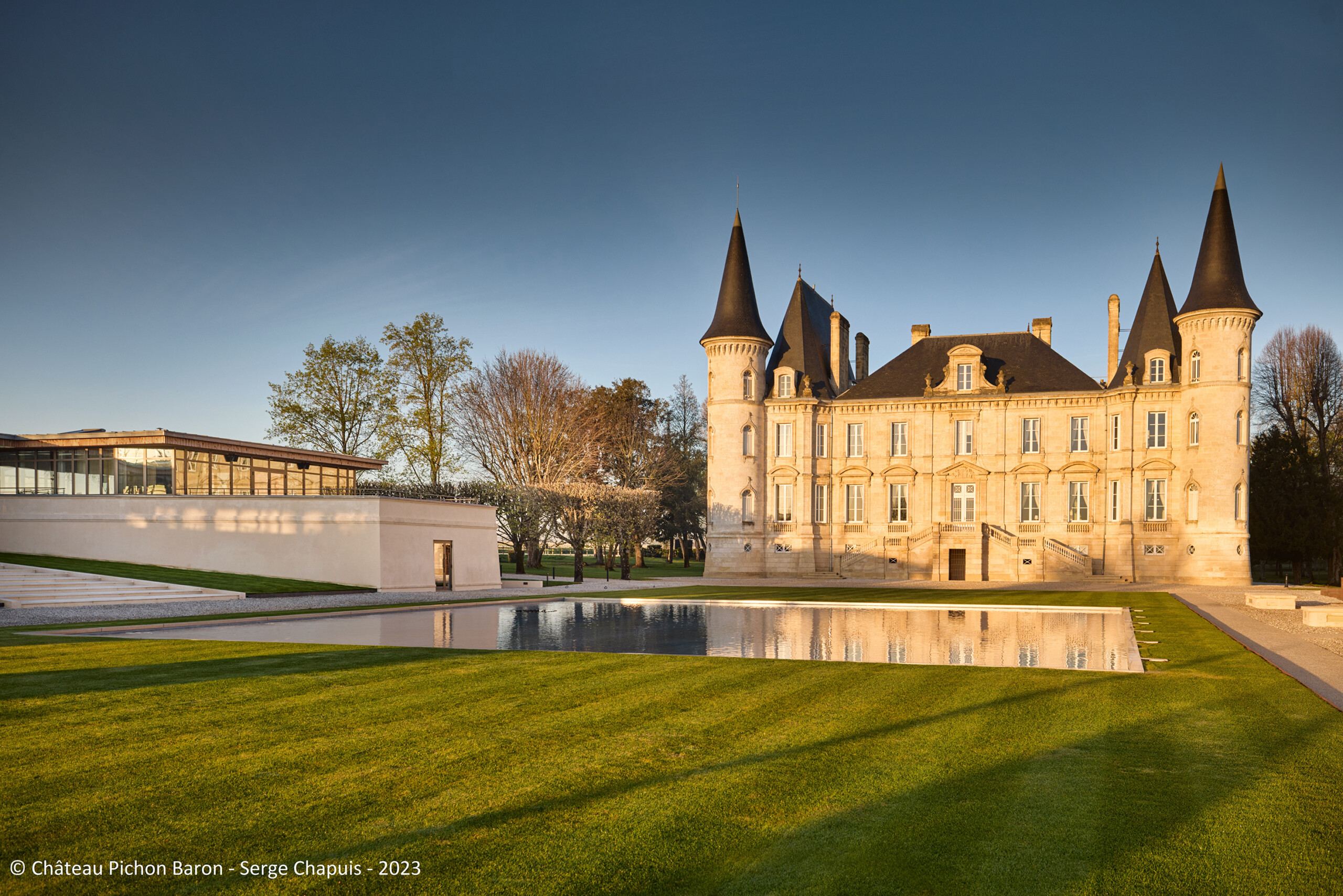
The brand today and tomorrow
G: In the past, châteaux used to market almost all their production as en primeur wines. Is this trend now a thing of the past?
CS: We have decided to market fewer wines as Primeurs since the 2014 vintage. Previously, we put 95% of our production into Primeurs. Today, it’s just over 50%. This was an important decision, and one that had short-term costs. But today, the results of this experiment are extremely positive at Pichon Baron, and we have very good feedback from our customers. The advantage of this approach is that we offer our customers a choice. If a customer wants to buy Pichon Baron en Primeur, they can. But if they’re not able to buy en Primeur for whatever reason, or if they don’t want to invest their money now for a wine that will be consumed later, we offer the option of opening wines that are kept at the Château in the meantime. The option is there. Of course, we work exclusively with the Bordeaux marketplace for both options. This offers different opportunities for our partners to work with us, as well as two possibilities for customers.
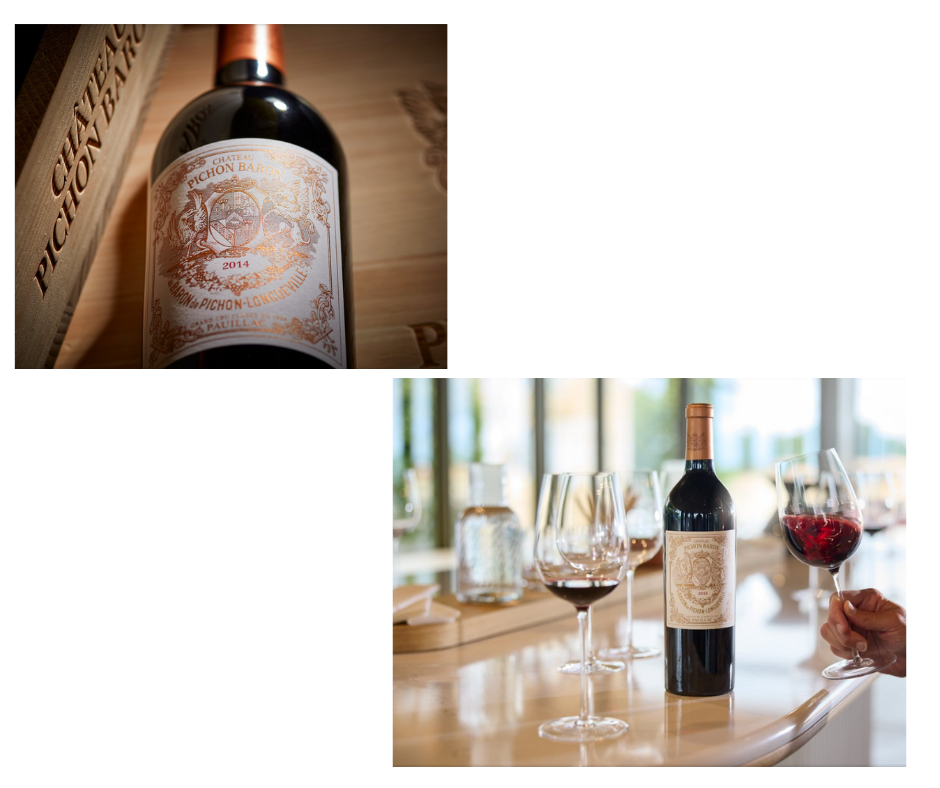
G: How do you see the price inflation of the top estates in recent years?
CS: The rising prices of the most prestigious estates, here and elsewhere, are linked to a long-term trend of increasing global demand for the relatively small list of the world’s greatest wines. This demand has grown steadily over the last 30 years, with fluctuations, but growing global wealth is driving people to seek out the wines on this shortlist. In my opinion, this demand will continue to grow. We own estates with exceptional terroirs, and our mission is to look after these estates to produce the best wines they are capable of. For the investor, the financial objective is to appreciate the land value of the wine estates. If we have great terroirs and produce great wines, the land value increases. Historically, this has been the case, and I think this process will continue. Everything we do at AXA Millésimes is based on this idea.
G: In Bordeaux, we have a very special La Place system. Is this open distribution system an advantage for the importers and distributors who are the négoce’s customers?
CS: I’m a great supporter and admirer of La Place de Bordeaux, especially for the Grands Vins, and at Pichon Baron we work with some excellent négociant partners. Sometimes, for someone from the outside, this system can seem odd, and someone from another profession might think: “We could do better!” However, after a while, these newcomers realise that this system, despite its flaws – for no system is perfect – has succeeded in establishing a capillary and global distribution for the properties that participate in it. The best example is what happens at the Primeurs during a good year: when the quality is good, demand is strong and the price is well chosen by the estate. The wine goes on sale in the morning, and our wine merchant partners offer it to their partners around the world during the day. If all goes well, at the end of the day or in the days that follow, your wine is distributed worldwide. For the estate, this is a colossal advantage because doing all this with a sales team all over the world will cost a fortune compared with the relatively low margin that the négociants take to sell en Primeur. It’s an advantage for the estate and for distributors around the world. Because if we didn’t have this capillary and worldwide system, the owners would be obliged to ask a higher price for their wines.
For our other wines, like Quinta do Noval, we work with exclusive distributors by country, for the simple reason that there is no La Place de Bordeaux in Portugal. So we opted for exclusive distribution in each country, and that works too. We’ve had loyal distributors for decades. For example, our distributor in Denmark has been distributing Quinta de Noval for 135 years, and I value that relationship enormously. Exclusive distribution may work for other regions, but here, for the Grands Crus, it is a very good system.
G: Over the last few years, we’ve seen a growing interest in the market for wines produced outside Bordeaux. How do you explain this trend?
CS: It’s no accident that all these big producers with their great wines from elsewhere are coming here. They see that La Place system works well, especially for iconic wines. However, we can also see that it is not suitable for all wines.
The Wines
G: Do you remember one or more wines that have marked your life as a great taster?
CS: As I said earlier, it’s a crystallisation between people. I could talk about the time when my father wrote his first book on Bordeaux wines. I worked with him on the book and we didn’t have a lot of money. I had just left university and my father had received an advance to write his book. During our visits to Bordeaux, there were sometimes wonderful moments when we were received in the châteaux, but sometimes we had to make do with our own means and limited resources. In these cases, we stayed in very small hotels and shared a room, eating in modest restaurants. One day, during a tasting at Château Palmer, the manager at the time offered us a bottle of Palmer 1961. He told us that it wasn’t a wine to be tasted in a tasting room and that we needed time to savour it. That evening, we were in a small hotel with an extremely basic restaurant in Lesparre and we decided to open this bottle of Palmer 1961, which was obviously exceptional. But there was also something about that moment between my father and me, and the contrast between the absurdity of our catastrophic financial situation and the generosity, the opulence of this wine that made it even greater. That moment is engraved in my memory forever. I remember very clearly saying to him: “the people who made this wine have achieved something extraordinary”.
G: What, in your opinion, characterises an exceptional bottle?
CS: It’s a memorable wine, shared between people. It’s a wine capable of crystallising a moment of happiness between those who share it, making that moment even more memorable.
G: Could you say a few words about 2023?
CS:I’d like to say “it is embarrassingly good”. This vintage has nothing in common with 2022, which has very unique characteristics. For us, 2023 is somewhere between the style of 2019 and 2020, with the elegance and precision of 2019 and a slightly more expressive, ripe and open side of 2020. It will be an immense pleasure to taste this wine en Primeur.
Gerda BEZIADE has an incredible passion for wine, and possesses a perfect knowledge of Bordeaux acquired within prestigious wine merchants for 25 years. Gerda joins Roland Coiffe & Associés in order to bring you, through “Inside La PLACE” more information about the estate we sell.

